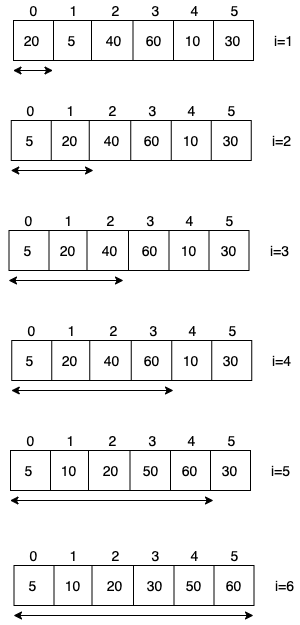Insertion Sort
- O(n2)
- In-place and stable
- Used in practice for small array (Tim Sort and Intro Sort)
- O(n) in best case

Note: It divides array into two sub array. 0 to i-1 is sorted and i to n-1 is unsorted. Since 0th element already sorted in 0-0 subarray, so we have started with i=1

package main
import "fmt"
func main() {
arr := []int{10, 3, 25, 17, 21, 55}
// arr := []int{3, 10, 17, 21, 25, 55}
insertionSort(arr)
fmt.Println(arr)
}
func insertionSort(arr []int) {
for i := 1; i < len(arr); i++ {
key := arr[i]
j := i - 1
for j >= 0 && arr[j] > key {
arr[j+1] = arr[j]
j--
}
arr[j+1] = key
}
}
Time Complexity
Best Case: θ(n) if already sorted
Worst Case: θ(n2) if it is reverse sorted
In General:O(n2)